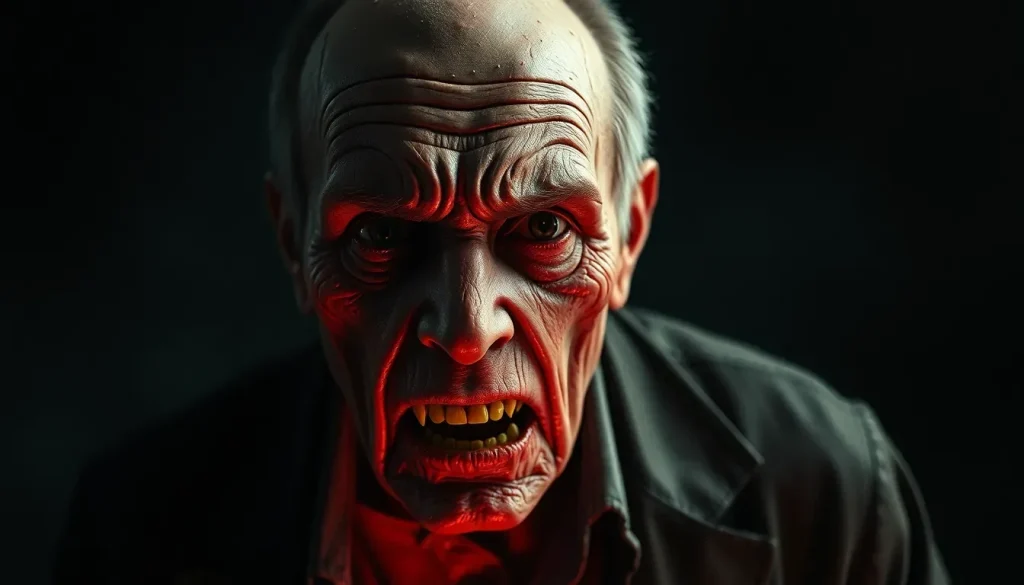The true story of Ed Gein, the monster in Netflix series

The chilling narrative of Ed Gein continues to captivate audiences, especially with the recent release of Monster: The Story of Ed Gein on Netflix. This series, produced by the renowned team of Ryan Murphy and Ian Brennan, delves into the life of one of America’s most infamous criminals. Gein's story is not only a tale of horror but also a complex exploration of trauma, family dynamics, and the human psyche.
Born on August 27, 1906, Ed Gein's life was marked by tragedy from the start. Growing up on a remote farm in Wisconsin, he was subjected to a turbulent home environment. His father, an abusive alcoholic, often inflicted violence on his family, while his mother, Augusta, imposed strict religious beliefs and instilled a sense of fear and paranoia in her children. This toxic upbringing laid the groundwork for Gein's later deviant behavior. His brother, Henry, also played a crucial role in his life until his untimely and suspicious death in 1944, which further isolated Ed. After losing both his brother and mother within a year, Ed became increasingly reclusive, spending most of his time in their dilapidated farmhouse.
Ed Gein's gruesome legacy
Ed Gein became known as the "Plainfield Butcher" and the "Necrophile of Plainfield" due to the horrific discoveries made by law enforcement in 1957. His arrest was precipitated by the mysterious disappearance of Bernice Worden, a local hardware store owner. Investigators traced her last transaction, which pointed them to Gein's property. What they found inside was beyond imagination: the dismembered body of Worden, along with numerous other macabre trophies crafted from human remains.
- Skulls used as soup bowls
- Human skin fashioned into clothing
- Body parts preserved in jars
- Decorative items made from various human remains
The grotesque collection not only horrified the community but also shocked the nation. Gein's fascination with death and decay, fueled by a warped obsession with his deceased mother, led him to dig up corpses from local cemeteries. He believed that by exhuming the bodies of women who resembled her, he could somehow resurrect her through his macabre creations.
Ed Gein confessed his crimes
During police interrogations, Gein confessed to having exhumed corpses from approximately 40 graves. He claimed that in many instances, he had been in a daze, not fully aware of his actions. However, there were specific instances where he intentionally took bodies, creating a bizarre "woman suit" in a delusional attempt to become his mother.
Additionally, Gein admitted to murdering Mary Hogan, the owner of a local tavern, who had disappeared in 1954. His confessions prompted investigators to explore other unsolved missing persons cases in the area, although Gein was ultimately exonerated from many of those charges due to inconclusive evidence, despite lingering suspicions.
The trial and its aftermath
During the trial, Ed Gein pleaded not guilty by reason of insanity. He was diagnosed with schizophrenia, which rendered him mentally incompetent to stand trial. Consequently, he was committed to the Central State Hospital for the Criminally Insane. His mental health became a pivotal point in the proceedings, resulting in his being declared mentally unfit for trial initially, followed by a determination that he was competent enough to participate in his own defense.
In 1968, after years of psychiatric treatment, Gein was found competent to stand trial, where he was eventually convicted of murder. However, he was once again deemed insane and returned to the hospital, spending the remainder of his life in mental health facilities. He passed away on July 26, 1984, from respiratory failure, a date that resonates eerily with the finale of Monster: The Story of Ed Gein.
Understanding Ed Gein's impact on popular culture
Ed Gein's life and crimes have significantly influenced horror fiction and cinema. His twisted narrative inspired several iconic horror characters and films, including
- Norman Bates from Psycho
- Leatherface from The Texas Chainsaw Massacre
- Buffalo Bill from The Silence of the Lambs
These characters share traits that echo Gein's disturbed psyche, reflecting society's fascination with the macabre and the monstrous. The stories derived from his life serve as cautionary tales about the potential for horrific behaviors lurking beneath the surface of seemingly ordinary individuals.
The new Netflix series: What to expect
Monster: The Story of Ed Gein offers a dramatized retelling of Gein's life, exploring not only the grisly details of his crimes but also the complicated relationship he had with his mother. With Charlie Hunnam portraying Gein, the series aims to provide a more profound understanding of the factors that contributed to his transformation into a notorious criminal. The series continues the tradition of combining psychological exploration with horror, emphasizing the complex interplay between mental illness, trauma, and violence.
Fans of true crime and horror will find the series both disturbing and enlightening, as it challenges viewers to confront the darkness of human nature while exploring the societal factors that enable such tragic outcomes.
For those interested in catching a glimpse of what the series entails, you can watch the official trailer here:
Ed Gein remains a chilling figure in American criminal history, embodying the terrifying potential for violence that can exist behind closed doors. His legacy serves as a reminder of the importance of understanding mental health issues and the impacts of familial relationships. As the new Netflix series sheds light on his life, it also encourages a dialogue about the factors that lead individuals down dark paths.
In conclusion, Ed Gein’s story is not merely one of horror but a complex exploration of humanity's darker side, making it a significant subject for analysis and reflection in both true crime and psychological studies.




Leave a Reply